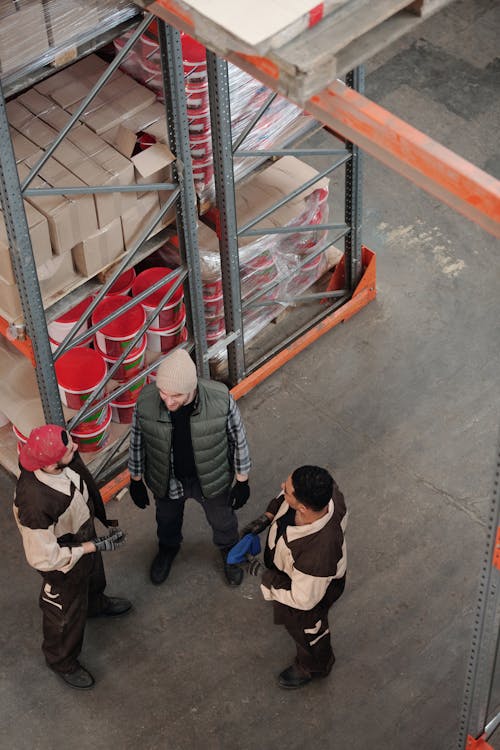Truck Automation on Worker Safety and Productivity
Wearable Technology and Truck Automation Enhance Worker Safety and Productivity
It goes without saying that mobile technology, especially wearable technology, is transforming the most dynamic and demanding fields, such as logistics and warehousing. Since these industries are steadily expanding and developing, integrating technological changes like truck automation to improve the level of protection and efficiency of employees should be even more vital. The use of smart products—especially helmets, vests, glasses, and biometric sensors—in operations, along with advancements in truck automation, present a number of solutions that satisfactorily address the issues of safety and workability. By combining wearable technology with truck automation, companies can further enhance their operational capabilities and worker safety
- Making Sense about Wearable Technology in the Light of Logistic and Warehousing Environment
Wearable technology is therefore defined as electronic devices that are worn on the human body in such a manner that it can be easily incorporated into clothes and other accessories. All of these devices are intended to keep tabs, convey information and analyze data which could be critical in improving the outcomes and standard conditions in numerous settings.
In the application of logistics and warehousing, wearables help to monitor factors such as the physical exertion, environmental factors, and even the stock since workers in these sectors are frequently involved in physical endeavors. Implemented together, these technologies easily provide solutions providing a safer environment in the workplace as well as increased productivity.
.2. Enhancing Worker Safety with Wearable Technology

Real-Time Health Monitoring
Some wearable devices have bio-sensors that are in a position to measure other parameters such as the rate of heartbeat, temperature, blood pressure etc. In high-stress work environments these metrics can be useful in mitigating the risks of heat stress, fatigue or health complications. For example, wearable smart vests might have sensors that might notify the workers and supervisors on signs of working hard or the workers getting dehydrated, this makes sure that more severe health complications are avoided.
Fall Detection and Alert Systems
Slips and falls are the main causes of accidents in the warehousing space as there are heights difference, high shelves, and often lifting of heavy stuff. Smart helmets and vests containing accelerometers and gyroscopes for instance can be used in detecting features such as a sudden movement or an impact which may suggest a fall. Such equipment can self-trigger alarms in case of a fall and alert supervisors or emergency attendants thereby minimizing the response time and possibly preventing deaths.
Environmental Monitoring
Wearable devices can also contain sensors to measure the environmental parameters like humidity, temperature, and noise. In places such as warehouses where dust, fumes or extreme temperatures might be present, these can supply the information that can help protect the workers from prolonged exposure to hazardous situations. For instance, a wearable may notify a worker when the air quality in one part of the workplace is poor by displaying a message that reads ‘It is advisable to wear a mask because the air quality is high’.
Ergonomics:
Ergonomics refers to a branch of biology that deals with designing equipment, devices, systems or environments that fit the human body to enhance human well-being and lower the frequencies of accidents within the workplace.
Additional human wearables, for example, exoskeletons and smart belts enable in a reduction of the stress and in avoiding the development of the musculoskeletal disorders. These devices are intended to facilitate and amplify the body’s movements and especially in the event of repetitive and compulsive lifting. In distributing the weight and lessening physical exertion, these wearables work to mitigate dangers of back injuries and the general work-related musculoskeletal disorders.
- Basically, modern wearable technology can help enhance workforce productivity.
Improved Interpersonal Interaction
Though smart glasses and augmented reality (AR) headsets can be worn by the workers in the warehouse where they may interact in a better way with each other. Such devices can put various information from the digital world over the real environment displaying instructions, direction aides, and status of the surrounding environment. For instance, AR glasses provide picking lists or route optimizations directly onto the glass worn by the worker therefore enhancing its operations.
Streamlined Inventory Management
Wearable technology can also be used to facilitate management of inventory in a business organization. RFID tags integrated into RFID reader gloves or even bar-code scanners help workers check inventory in a very short time without having to hold other scanning devices. This not only makes the inventory faster but also eliminates most of the errors which result from scanning or manual entry of data.
Use of Data Analysis for Improvement or Innovations
Smart devices can also gather huge amounts of information concerning the workers’ output and the organization’s productivity levels. The evaluation of this data may give worthwhile information concerning the workflow, set-backs and potential changes. For instance, data from smart vests and other sensors can show for how long the workers take on particular tasks or indicate that the workers might require more training. Such data can be useful for managers to make the right decision with regard to possible improvements of the process and to increase performance.
Employee training and skills acquisition
Wearable technology can also be employed in training as well as in skill development. VR Headsets and AR glasses are useful as devices that allow for emulating real environment situations and training. Trainees can develop technical skills in a simulated setting in which they can learn practical procedures but with no hazard connected with real-life training. This can be particularly useful in training particularly when introducing new employees to the organization or when training the employees on new tools and procedures.
- Addressing Challenges and Considerations
While the benefits of wearable technology in logistics and warehousing are substantial, there are also challenges and considerations to address:While the benefits of wearable technology in logistics and warehousing are substantial, there are also challenges and considerations to address:
Personal Privacy and Data Protection
Wearable technology basically entails the gathering and analysis of individual as well as possibly sensitive information. It is important to have strong data security and overcome all the privacy issues in order to keep the trust and follow the rules. To ensure that the workers’ data is protected, organizations must ensure that they employ proper data management and also ensure that the workers are informed on how their data will be used.
Integration and Compatibility
Organizational incorporation of wearable technology has been noted to present various challenges The integration of the wearable technology in the current systems has been observed to present several. Global organizations have a challenge of checking on whether these new devices have prevailing technologies and are integrated into the business setups or not. This may involve new constructions or reconfiguration of current systems’ infrastructure and adjustments.
Cost and ROI
Wearable technology, as a concept, entails a fairly huge first cost. This implies that the company’s heads undertake analyses to decide whether the returns on investments (ROIs) are likely to be high given that improving safety and increasing productivity may be costly in the short term. In most instances, the costs of investment that go hand in hand with the ricerca can in the long run offset the high costs through lowered accident rates as well as improved productivity.
Training and Adoption
The devices have to be used in the right way by the workers for wearable technology to yield good results. This ranges from knowing the features of the technology to how one has to analyze data to how one has to include the technology into his/her work. Proper change management must be imposed for the workers to be relaxed enough and to gain mastery as they work with the new implementation.
- Future Trends and Developments
As seen above, in this present decade, logistics and warehousing has enjoyed the efficiency of wearable technology. Emerging trends include:
AI Integration: Several potential advancements can be improved by integrating the use of AI to wearable devices; these include predictive analytics and real-time decision making systems. Smart technologies wearable may potentially provide enhanced health tracking and prior warning signals to personal safety.
Advanced Materials: Development of new materials and technologies will enhance the comfort and the practical usability of wearable devices to be used not only in scope of sport activity.
Interoperability: Following wearables are therefore expected to be compatible with other systems and other devices to make an overall coherent and enhanced safety and performance.
Increased Personalization: The wearable technology devices will be developed further to fit the specific needs and wants of a particular worker to increase both the utility and the adoption rates.
Conclusion
Smart clothing also has the capability to change security and efficiency in the application of the logistics and warehousing industry. These devices cater for safety issues such as health monitoring, detecting falls, monitoring the environment and offering support on ergonomics, besides the overall efficiency in operation, communication, training and other needs.
It is important for organizations to learn more about the advancement of the technologies and how to incorporate the wearables. If properly applied, wearable technology may result in safer working environment, better operations, and improved bottom-line, which is crucial for the constantly increasing velocity of the logistics and warehouse business field.





